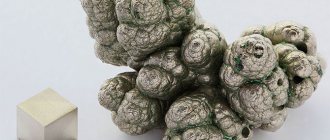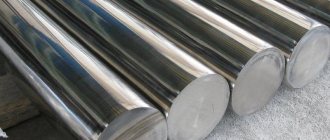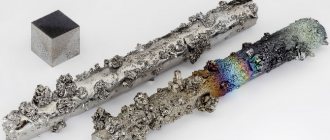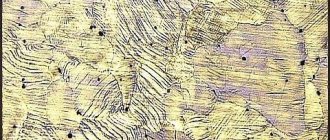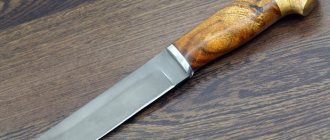Also on topic:
MINERAL RESOURCES
The main industrial uses of tin are in tinplate (tinned iron) for making containers, in solders for electronics, in household piping, in bearing alloys, and in coatings of tin and its alloys. Tin forms various compounds, many of which have industrial applications. The most economically important tin mineral is cassiterite (tin oxide). The world's cassiterite deposits are developed in Southeast Asia, mainly in Indonesia, Malaysia and Thailand. Other important deposits of cassiterite are found in South America (Brazil and Bolivia), China and Australia. See also TIN PRODUCTION.
Historical reference.
Tin was probably used back in the days of Homer and Moses. Its discovery was most likely associated with the accidental recovery of alluvial cassiterite (tin stone); alluvial deposits occur at or near the surface, and tin ores are much more easily reduced than ores of other metals. The ancient Britons were well acquainted with tin: ancient forges containing slag were discovered in Cornwall in southwest England. Metal was obviously inaccessible and expensive, because... Tin objects are rare among Roman and Greek antiquities, although tin is mentioned in the Bible in the Fourth Book of Moses (Numbers), and the word cassiterite, which is still used today to designate the oxide tin ore, is of Greek origin. Malacca and East India are mentioned as sources of tin in Arabic literature of the 8th–9th centuries. and various authors in the 16th century. in connection with the Great Geographical Discoveries. The history of tin mining in Saxony and Bohemia dates back to the 12th century, but in the 17th century. The 30 Years' War (1618–1648) destroyed this industry. Production was subsequently resumed, but soon declined due to the discovery of rich deposits in America.
Production stages
When obtaining tin, the cassiterite ore rock is crushed in mills until particles about 1 cm in size appear. The next stage is the separation of the substance from the waste rock by vibration on gravity tables. The ore purification and beneficiation method is then used to increase the tin content to 45−72%.
Subsequent roasting removes arsenic and sulfur, and the resulting concentrate is fired in a kiln. In the crater, charcoal is placed interspersed with ore samples and aluminum. Pure metal of semiconductor purity is obtained by melting solids or by purifying by electrolysis.
The main deposits are located in southeast Asia and China, large production is located in Australia and America. Russia is famous for its tin deposits in the Khabarovsk and Primorsky Territories, Chukotka Autonomous Okrug, Yakutia and other regions.
Bronze.
Long before they learned to extract tin in its pure form, an alloy of tin and copper was known - bronze, which was apparently obtained already in 2500-2000 BC.
Tin in ores is often found together with copper, so when copper was smelted in Britain, Bohemia, China and southern Spain, not pure copper was formed, but an alloy of it with a certain amount of tin. Early copper carpentry tools (chisel, adze, etc.) from Ireland contained up to 1% Sn. In Egypt, copper utensils of the 12th Dynasty (2000 BC) contained up to 2% Sn, apparently as an incidental impurity. The primitive practice of copper smelting was based on the use of a mixture of copper and tin ores, resulting in bronze containing up to 22% Sn. Table: Properties of b-TIN
| PROPERTIES of b-TIN | |
| Atomic number | 50 |
| Atomic mass | 118,710 |
| Isotopes | |
| stable | 112, 114–120, 122, 124 |
| unstable | 108–111, 113, 121, 123, 125–127 |
| Melting point, °C | 231,9 |
| Boiling point, °C | 2625 |
| Density, g/cm3 | 7,29 |
| Brinell hardness) | 3,9 |
| Content in the earth's crust, % (mass.) | 0,0004 |
| Oxidation states | +2, +4 |
Content
- 1. History
- 2 Origin of the name
- 3 Being in nature
- 3.1 Deposits
- 3.2 Prevalence in nature
- 3.3 Forms of location
- 3.3.1 Solid phase. Minerals
- 3.3.2 Mineral forms proper
- 3.3.2.1 Native elements, alloys and intermetallic compounds
- 3.3.2.2 Tin oxide compounds
- 3.3.2.3 Tin sulfide compounds
- 3.3.3 Colloidal form
- 3.3.4 Forms of tin in the liquid phase
- 3.4 Industrial types of tin deposits
- 4 Production
- 5 Physical properties
- 6 Tin Plague
- 7 Application
- 8 Isotopes
- 9 Physiological action
Physical properties.
Tin is a soft silver-white ductile metal (can be rolled into very thin foil - staniol) with a low melting point (easily smelted from ores), but a high boiling point. Tin has two allotropic modifications: a-Sn (gray tin) with a face-centered cubic crystal lattice and b-Sn (regular white tin) with a body-centered tetragonal crystal lattice. The b ® a phase transition is accelerated at low temperatures (–30° C) and in the presence of gray tin crystal nuclei; There are known cases when tin products in the cold crumbled into gray powder (“tin plague”), but this transformation, even at very low temperatures, is sharply inhibited by the presence of minute impurities and therefore rarely occurs, representing more scientific than practical interest. See also ALLOTROPY; CHEMICAL ELEMENTS; PERIODIC SYSTEM OF ELEMENTS.
Pure tin has low mechanical strength at room temperature (you can bend a tin rod and hear a characteristic cracking sound caused by the friction of individual crystals against each other) and is therefore rarely used. However, it easily forms alloys with most other ferrous and non-ferrous metals. Tin-containing alloys have excellent anti-friction properties in the presence of lubricant, and therefore are widely used as bearing materials.
Where to find Surtling cores
Materials such as wood and stone are easy to find. At the same time, getting surtling kernels is not easy.
10 pieces will be needed to build a coal furnace and a smelter - two key buildings needed for the production of metals. To find the surtling cores, you need to find the burial chambers.
Around the entrances to the dungeons there are small stone structures guarded by skeletons, found in the Black Forest. Before entering, you need to create a torch to illuminate the path in the crypts. You will need 1 wood and 1 resin.
The burial rooms contain several winding corridors, wooden doors and skeletons. You will need to examine the cameras and find 10 Surtling cores (they look like glowing cubes).
Tin products are quite demanding - they require regular maintenance. Ideally, they should be cleaned immediately after use to prevent food residue from sitting in them for too long.
You can remove dirt with warm water and a soft sponge with dishwashing detergent applied to it. After cleaning, the devices should be rinsed with clean water and placed to dry on a spread towel or drying rack.
Do not use a dishwasher to clean such products. Also, do not use hard sponges or abrasive detergents - they can scratch the surface of the devices.
Modern, unpatinaed, tarnished pewter can be cleaned with a polish designed for silver or brass items. Some mild abrasive compounds (“Blesk-500” or analogues) are also suitable. They are applied to a soft cloth and any dark spots or traces of corrosion are removed.
Chemical properties.
At room temperature, tin is chemically inert to oxygen and water. In air, tin is gradually covered with a protective oxide film, which increases its corrosion resistance. The chemical inertness of tin and its oxide film under normal conditions is associated with its use in coating tin containers for food products, primarily cans. Tin is easily applied to steel and its corrosion products are harmless. In compounds, tin exhibits two oxidation states: +2 and +4, and tin(II) compounds are mostly relatively unstable in dilute aqueous solutions and are oxidized to tin(IV) compounds (they are sometimes used as reducing agents, for example SnCl2). Dilute hydrochloric and sulfuric acids act on tin very slowly, but concentrated acids, especially when heated, dissolve it, and in hydrochloric acid tin(II) chloride is obtained, and in sulfuric acid tin(IV) sulfate is obtained. Tin reacts with nitric acid the more intensely, the higher the concentration and temperature: in dilute HNO3, soluble tin(II) nitrate is formed, and in concentrated HNO3, insoluble b-tin acid H2SnO3 is formed. Concentrated alkalis dissolve tin with the formation of stannites - salts of stannic acid H2SnO2; In solutions, stannites exist in the hydroxo form, for example Na2[Sn(OH)4]. Tin(II) compounds are of greatest industrial importance in the production of galvanic coatings. Tin(IV) compounds find extensive industrial use.
Tin oxides are amphoteric, exhibiting both acidic and basic properties. Tin(IV) oxide occurs naturally as the mineral cassiterite, and pure SnO2 is obtained from the pure metal; Tin dioxide SnO2 is used to prepare white glazes and enamels. From SnO2, when interacting with alkalis, stannates are obtained - salts of tin acid, the most important of which are potassium and sodium stannates; solutions of stannates are widely used as electrolytes for the precipitation of tin and its alloys. SnCl4 is tin tetrachloride, the starting compound for many syntheses of other tin compounds, including organotin compounds.
Being in nature
Tin is a rare trace element; tin ranks 47th in terms of abundance in the earth's crust. The Clark content of tin in the earth's crust ranges, according to various sources, from 2·10−4 to 8·10−3% by mass. The main mineral of tin is cassiterite (tin stone) SnO2, containing up to 78.8% tin. Much less common in nature is stannin (tin pyrite) - Cu2FeSnS4 (27.5% Sn).
Place of Birth
The world's tin deposits are located mainly in China and Southeast Asia - Indonesia, Malaysia and Thailand. There are also large deposits in South America (Bolivia, Peru, Brazil) and Australia.
In Russia, tin ore reserves are located in the Chukotka Autonomous Okrug (Pyrkakai stockworks; Valkumey mine/village, Iultin - mining was closed in the early 1990s), in the Primorsky Territory (Kavalerovsky district), in the Khabarovsk Territory (Solnechny district, Verkhnebureinsky district ( Pravourmiyskoye deposit)), in Yakutia (Deputatskoye deposit) and other areas.
Prevalence in nature
The prevalence in nature is shown in the following table:
| Geol. an object | Kamen. meteorites | Dunits and others. | Basalts, etc. | Diorites, etc. | Granitoids | Glina, etc. | Ocean water | Live matter (% of live weight) | The soil | Plant ash |
| Contents, weight. % | 1·10−4 | 5·10−5 | 1,5·10−4 | − | 3·10−4 | 1·10−3 | 7·10−7 | 5·10−5 | 1·10−3 | 5·10−4 |
In unpolluted surface waters, tin is found in submicrogram concentrations. In groundwater its concentration reaches several micrograms per dm³, increasing in the area of tin ore deposits, it enters the water due to the destruction primarily of sulfide minerals, which are unstable in the oxidation zone. PDKSn = 2 mg/dm³.
Cassiterite crystals - tin ore
Tin is an amphoteric element, that is, an element capable of exhibiting acidic and basic properties. This property of tin also determines the characteristics of its distribution in nature. Due to this duality, tin exhibits lithophilic, chalcophilic and siderophilic properties. Tin in its properties is close to quartz, as a result of which the close connection of tin in the form of oxide (cassiterite) with acidic granitoids (lithophilicity), often enriched in tin, is known, up to the formation of independent quartz-cassiterite veins. The alkaline behavior of tin is determined by the formation of quite a variety of sulfide compounds (chalcophilicity), up to the formation of native tin and various intermetallic compounds known in ultrabasic rocks (siderophilicity).
Forms of location
The main form of occurrence of tin in rocks and minerals is scattered (or endocript). However, tin also forms mineral forms, and in this form it is often found not only as an accessory in acidic igneous rocks, but also forms industrial concentrations mainly in oxide (cassiterite SnO2) and sulfide (stannine) forms.
Solid phase. Minerals
Cassiterite crystals
In general, the following forms of tin occurrence in nature can be distinguished:
- Scattered form ; the specific form of tin in this form is unknown. Here we can talk about an isomorphically dispersed form of tin occurrence due to the presence of isomorphism with a number of elements (Ta, Nb, W - with the formation of typically oxygen compounds; V, Cr, Ti, Mn, Sc - with the formation of oxygen and sulfide compounds). If tin concentrations do not exceed certain critical values, then it can isomorphically replace the named elements. The mechanisms of isomorphism are different.
- Mineral Form : Tin is found in concentrating minerals. As a rule, these are minerals in which iron Fe+2 is present: biotites, garnets, pyroxenes, magnetites, tourmalines, etc. This relationship is due to isomorphism, for example, according to the scheme Sn+4 + Fe+2 → 2Fe+3. In tin-bearing skarns, high concentrations of tin are found in garnets (up to 5.8 wt.%) (especially in andradites), epidotes (up to 2.84 wt.%), etc.
In sulfide deposits, tin is included as an isomorphic element in sphalerites (Silinskoye deposit, Russia, Primorye), chalcopyrites (Dubrovskoye deposit, Russia, Primorye), and pyrites. High concentrations of tin were detected in pyrrhotite from greisen from the Smirnovskoe deposit (Russia, Primorye). It is believed that due to limited isomorphism, solid solutions decompose with micro-precipitates of Cu2+1Fe+2SnS4 or tillite PbSnS2 and other minerals.
Actually mineral forms
Native elements, alloys and intermetallic compounds
Although the concentrations of these minerals in rocks are very low, they are distributed in a wide range of genetic formations. Among the native forms, along with Sn, Fe, Al, Cu, Ti, Cd, etc. were identified, not counting the already known native platinoids, gold and silver. These same elements also form various alloys with each other: (Cu + Sn + Sb), (Pb + Sn + Sb), etc., as well as solid solutions. Among the intermetallic compounds, stistaite SnSb, atakite (Pd,Pt)3Sn, shtumyrlite Pt(Sn,Bi), zvyagintsevite (Pd,Pt)3(Pb,Sn), taymyrite (Pd,Cu,Pt)3Sn and others were identified.
The following forms of occurrence of tin and other elements are found in various geological formations:
- A group of intrusive and effusive igneous rocks: traps, picrites of the Siberian platform, hyperbasites and gabbroids of Kamchatka, kimberlites of Yakutia, lamproites of Aldan, etc.; granitoids of Primorye, Far East, Tien Shan.
- A group of metasomatically and hydrothermally altered rocks: copper-nickel ores of the Siberian platform, gold deposits of the Urals, the Caucasus, Uzbekistan, etc.[9]
- Group of modern ore formation: pelagic sediments of the Pacific Ocean, products of the Great Fissure Tolbachik eruption, Uzon hydrothermal system in Kamchatka, etc.
- A group of sedimentary rocks of various origins.
Tin oxide compounds
The most famous form is the main mineral of tin - cassiterite SnO2, which is a compound of tin with oxygen. According to nuclear gamma resonance spectroscopy, the mineral contains Sn+4.
Cassiterite
Main article: Cassiterite
Cassiterite (from the Greek kassiteros - tin) is the main ore mineral for the production of tin. Theoretically contains 78.62% Sn. It forms separate secretions, grains, continuous massive aggregates, in which the grains of the mineral reach a size of 3 - 4 mm and even more.
- Density 6040-7120 kg/m³ (lowest for light-colored cassiterites).
- Hardness 6½.
- The shine is matte, the edges are diamond-like.
- Cleavage is imperfect.
- The fracture is conchoidal.
The main forms of cassiterite isolation:
- microinclusions in other minerals;
- accessory mineral deposits in rocks and ores;
- solid or disseminated ores: needle-shaped radial aggregates (Primorye), colomorphic and cryptocrystalline segregations and accumulations (Primorye); The crystalline form is the main form of cassiterite isolation. In Russia, cassiterite deposits are found in the Northeast, Primorye, Yakutia, and Transbaikalia; abroad - in Malaysia, Thailand, Indonesia, China, Bolivia, Nigeria, etc.
Hydroxide compounds
A secondary place is occupied by tin hydroxide compounds , which can be considered as salts of polytin acids. These include the mineral succulite Ta2Sn2+2O; solid solution of tin in magnetite of the type Fe2SnO4 or Fe3SnO3 (Brettstein Yu. S., 1974; Voronina L. B. 1979); “varlamovit” is a product of stannine oxidation; it is believed to be a mixture of amorphous and semi-amorphous Sn compounds, metatinic acid, a polycondensed phase and a hydrocassiterite phase. Hydrated oxidation products are also known - hydromartite 3SnOxH2O; mushistonite (Cu,Zn,Fe)Sn(OH)6; copper hydrostannate CuSn(OH)6, etc.
Silicates
A large group of tin silicates is known, represented by malayaite CaSn[SiO5]; pabstite Ba(Sn, Ti)Si3O9, stocasite Ca2Sn2Si6O18x4H2O, etc. Malayaite even forms industrial accumulations.
Spinelids
Among other oxide compounds, spinels are also known, for example, the mineral nigerite Sn2Fe4Al16O32 (Peterson EU, 1986).
Tin sulfide compounds
Includes various tin and sulfur compounds. This is the second most industrially important group of mineral forms of tin. The most important of these is stannine, the second most important mineral. In addition, frankeite Pb5Sn3Sb2S14, herzenbergite SnS, berndtite SnS2, tillite PbSnS2 and kesterite Cu2ZnSnS4 are noted. More complex sulfide compounds of tin with lead, silver, and copper, which are mainly of mineralogical significance, have also been identified. The close connection of tin with copper determines the frequent presence of chalcopyrite CuFeS2 deposits in tin ore deposits with the formation of the cassiterite-chalcopyrite paragenesis.
Stannin
Main article: Stannin
Stannine (from Latin stannum - tin), tin pyrite, a mineral from the class of sulfides with the general formula of the form Cu2FeSnS4. It follows from the chalcopyrite formula by replacing one Fe atom with Sn. Contains 29.58% Cu, 12.99% Fe, 27.5% Sn and 29.8 S, as well as impurities of Zn, Sb, Cd, Pb and Ag. A widespread mineral in tin ore deposits in Russia. In a number of deposits in Russia (Primorye, Yakutia) and Central Asia (Tajikistan), it is an essential element of sulfide minerals and often, together with varlamovite, makes up 10-40% of total tin. Often forms impregnations in ZnS sphalerite and chalcopyrite. In many cases, stannine decomposition phenomena with the release of cassiterite are observed.
Colloidal form
Colloidal and tin-silicon compounds play a significant role in the geochemistry of tin, although it has not been studied in detail. A significant place in the geology of the element is played by colomorphic compounds and the products of its crystalline transformations into cryptocrystalline varieties. Colomorphic cassiterite is considered as a form of expression of viscous gel-like solutions.
Independent studies have revealed an abnormally high solubility of SnO2 in chlorine-silicon solutions. Maximum solubility is achieved at a ratio of .
Analysis of the properties of the Sn(OH)4 compound and their proximity to the Si(OH)4 compound reveals its ability to polymerize, ultimately forming the compounds H2SnkO2k+1, SnkO2k−1(OH)2. In both cases, it is possible to replace the (OH) group with the F and Cl anions.
Thus, the polymerization of Sn(OH)4 molecules and their combination with Si(OH)4 molecules leads to the formation of a gel (colloid) and the appearance of HmSn2nSinOp chains, with m ≤ 8, or Hs[SiO2n(SnOm)d] (Nekrasov I. Ya. et al., 1973).
Available evidence suggests that the colloidal form is a natural intermediate in the precipitation of tin from hydrothermal solutions.
Forms of tin in the liquid phase
The least studied part of the geochemistry of tin, although cassiterites in the form of prisoner minerals have been established in gas-liquid inclusions (Kokorin A. M. et al., 1975). There are no works on the analysis of specific tin-containing natural solutions. Basically, all information is based on the results of experimental studies, which speak only about the probable forms of tin in solutions. A significant role in the development of the methodology for these studies belongs to Academician V. L. Barsukov
The entire set of experimentally established forms of tin in solutions is divided into groups:
- Ionic compounds . These compounds and their structure are described in terms of classical valence and stereochemical concepts. Subgroups are distinguished: Simple ions Sn+2 and Sn+4 are mainly found in magmatic melts, as well as in hydrothermal solutions with low pH values. However, in existing hydrothermal systems, reflected by the composition of gas-liquid inclusions, such conditions have not been established.
- Salts of halide acids - SnF2, SnF40, SnCl40. The role of chlorine in the transport and deposition of tin and associated metals is believed to be more significant than that of fluorine.
- Hydroxyl compounds of tin. Under alkaline conditions, the starting compounds are H2SnO2, H2SnO4, H2SnO3. These forms are often established based on known mineral forms. Some of these forms are of both artificial (CaSnO3, Ca2SnO4) and natural (FeSnO2, Fe2SnO4) origin. In acidic environments, these compounds behave as weak bases such as Sn(OH)2, Sn(OH)4. It is believed that one of the forms of manifestation of such compounds is varlamovit. According to experimental data, Sn(OH)4 is deposited only at T < 280 °C in slightly acidic or neutral conditions at pH = 7 - 9. The compounds Sn(OH)4 and Sn(OH)3+ are stable at pH = 7 - 9, then as Sn(OH)2+2 and Sn(OH)+2 - at pH < 7. Quite often, (OH)−1 groups are replaced by F and Cl, creating halogen-substituted modifications of tin hydrocompounds. In general, these forms are represented by the compounds Sn(OH)4-kFk or Sn(OH)4-kFk-nn. In general, the Sn(OH)3F compound is stable at T = 25–50 °C, and Sn(OH)2F² at T = 200 °C.
- Sulfide compounds. According to experimental data, the solution contains SnS4−4 or SnS3−2 compounds at pH > 9; SnS2O−2 (pH = 8 - 9) and Sn(SH)4 (pH = 6). There is mention of the existence of a compound of the Na2SnS3 type, which is unstable in an acidic environment.
Industrial types of tin deposits
The geochemical features of tin described above are indirectly reflected in the formational classification of tin ore deposits proposed by E. A. Radkevich with subsequent additions.
A. Formation of tin-bearing granites . Cassiterite is installed in the accessory part of granites.
B. Formation of rare metal granites . These are granites of the lithionite-amazonite-albite type (apogranites according to A. A. Beus). Cassiterite in the accessory part together with columbite-tatnatlite, microlite, etc.
B. Formation of tin-bearing pegmatites . Tin mineralization is characteristic of Be-Li-, Be-Ta-, F-Li- types.
D. Feldspar-quartz-cassiterite formation . Iv is highlighted. F. Grigoriev. These are quartz-feldspar veins with cassiterite and other minerals.
D. Quartz-cassiterite formation . Distributed to NE Russia. These are vein zones, greisens with quartz, muscovite, wolframite, cassiterite, etc.
E. Cassiterite-silicate-sulfide formation with tourmaline and chlorite types. One of the main productive formations of Primorye Russia.
G. Cassiterite-sulfide formation . Also the main tin-producing formation. It identifies the main types:
- stockwork tin-tungsten mineralization;
- ore bodies of quar-cassiterite-arsenopyrite type;
- productive quartz veins of sulfide-cassiterite-chlorite type;
H. Tin-skarn formation .
I. Woody tin formation (rhyolite formation).
K. Formation of basic and ultrabasic rocks (according to I. Ya. Nekrasov)
L. Formation of alkaline rocks of Ukraine (according to V.S. Metallidi, 1988).
Alloys.
One third of the tin is used to make solders. Solders are alloys of tin mainly with lead in different proportions depending on the purpose. An alloy containing 62% Sn and 38% Pb is called eutectic and has the lowest melting point among the alloys of the Sn – Pb system. It is included in compositions used in electronics and electrical engineering. Other lead-tin alloys, such as 30% Sn + 70% Pb, which have a wide solidification range, are used for pipeline soldering and as filler material. Lead-free tin solders are also used. Alloys of tin with antimony and copper are used as antifriction alloys (babbitt, bronze) in bearing technology for various mechanisms. Modern tin-lead alloys contain 90–97% Sn and small additions of copper and antimony to increase hardness and strength. Unlike early and medieval lead-containing alloys, modern cookware made from tin alloys is safe to use.
Isotopes
Main article: Tin isotopes
Natural tin consists of ten stable nuclides with mass numbers 112 (in a mixture of 0.96% by mass), 114 (0.66%), 115 (0.35%), 116 (14.30%), 117 (7. 61%), 118 (24.03%), 119 (8.58%), 120 (32.85%), 122 (4.72%) and 124 (5.94%). For some of them, double beta decay is energetically possible, but it has not yet been observed experimentally (2014) because the predicted half-life is very long (more than 1020 years).
Tin has the largest number of stable isotopes of all elements, which is due to the fact that 50 (the number of protons in tin nuclei) is the magic number - it constitutes a filled proton shell in the nucleus and thereby increases the binding energy and stability of the nucleus. Two doubly magic isotopes of tin are known, both of them are radioactive, since they are far from the beta stability band: neutron-deficient 100Sn (Z = N = 50) and neutron-rich 132Sn (Z = 50, N = 82).
Tin isotopes 117Sn and 119Sn are Mössbauer isotopes and are used in gamma resonance spectroscopy.
Coatings made of tin and its alloys.
Tin easily forms alloys with many metals. Tin coatings have good adhesion to the substrate, provide good corrosion protection and a beautiful appearance. Tin and tin-lead coatings can be applied by immersing a specially prepared object in a molten bath, but most tin coatings and tin alloys with lead, copper, nickel, zinc and cobalt are deposited electrolytically from aqueous solutions. The presence of a wide range of compositions for coatings made of tin and its alloys makes it possible to solve a variety of industrial and decorative problems.
origin of name
The Latin name stannum, related to the Sanskrit word meaning "steady, durable", originally referred to an alloy of lead and silver, and later to another alloy imitating it, containing about 67% tin; by the 4th century, this word began to be used to refer to tin itself.
The word tin is common Slavic, having correspondences in the Baltic languages (cf. Lit. alavas, alvas - “tin”, Prussian alwis - “lead”). It is a suffix from the root ol- (cf. Old High German elo - “yellow”, Latin albus - “white”, etc.), so the metal is named by color.
Connections.
Tin forms a variety of chemical compounds, many of which have important industrial applications. In addition to numerous inorganic compounds, the tin atom is capable of forming a chemical bond with carbon, which allows the production of organometallic compounds known as organotin compounds (see also ORGANOMETALLIC COMPOUNDS). Aqueous solutions of tin chlorides, sulfates and fluoroborates serve as electrolytes for the precipitation of tin and its alloys. Tin oxide is used in ceramic glazes; it gives the glaze opacity and serves as a coloring pigment. Tin oxide can also be deposited from solutions as a thin film on various products, which adds strength to glass products (or reduces the weight of vessels while maintaining their strength). The introduction of zinc stannate and other tin derivatives into plastic and synthetic materials reduces their flammability and prevents the formation of toxic smoke, and this area of application becomes the most important for tin compounds. A huge amount of organotin compounds are used as stabilizers for polyvinyl chloride, a substance used to make containers, pipelines, transparent roofing material, window frames, gutters, etc. Other organotin compounds are used as agricultural chemicals, for making paints and preserving wood.
Physiological action
Almost nothing is known about the role of tin in living organisms. The human body contains approximately (1-2) 10-4% tin, and its daily intake from food is 0.2-3.5 mg. Tin metal is non-toxic, which allows it to be used in the food industry. Tin poses a danger to humans in the form of vapors and various aerosol particles and dust. When exposed to tin vapors or dust, stannosis can develop - lung damage. Stannan (tin hydrogen) is a powerful poison. Some organotin compounds are also very toxic. The temporary permissible concentration of tin compounds in atmospheric air is 0.05 mg/m3, the maximum permissible concentration of tin in food products is 200 mg/kg, in dairy products and juices - 100 mg/kg. The toxic dose of tin for humans is 2 g.
Harmful impurities contained in tin under normal conditions of storage and use, including in the melt at temperatures up to 600 °C, are not released into the air of the working area in volumes exceeding the maximum permissible concentration in accordance with GOST. Long-term (15-20 years) exposure to tin dust has a fibrogenic effect on the lungs and can cause pneumoconiosis in workers.
